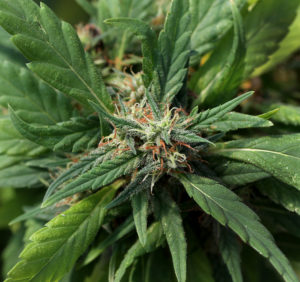Hemp Production – Keeping THC Levels Low
go.ncsu.edu/readext?561380
en Español / em Português
El inglés es el idioma de control de esta página. En la medida en que haya algún conflicto entre la traducción al inglés y la traducción, el inglés prevalece.
Al hacer clic en el enlace de traducción se activa un servicio de traducción gratuito para convertir la página al español. Al igual que con cualquier traducción por Internet, la conversión no es sensible al contexto y puede que no traduzca el texto en su significado original. NC State Extension no garantiza la exactitud del texto traducido. Por favor, tenga en cuenta que algunas aplicaciones y/o servicios pueden no funcionar como se espera cuando se traducen.
Português
Inglês é o idioma de controle desta página. Na medida que haja algum conflito entre o texto original em Inglês e a tradução, o Inglês prevalece.
Ao clicar no link de tradução, um serviço gratuito de tradução será ativado para converter a página para o Português. Como em qualquer tradução pela internet, a conversão não é sensivel ao contexto e pode não ocorrer a tradução para o significado orginal. O serviço de Extensão da Carolina do Norte (NC State Extension) não garante a exatidão do texto traduzido. Por favor, observe que algumas funções ou serviços podem não funcionar como esperado após a tradução.
English
English is the controlling language of this page. To the extent there is any conflict between the English text and the translation, English controls.
Clicking on the translation link activates a free translation service to convert the page to Spanish. As with any Internet translation, the conversion is not context-sensitive and may not translate the text to its original meaning. NC State Extension does not guarantee the accuracy of the translated text. Please note that some applications and/or services may not function as expected when translated.
Collapse ▲
Leo Stefanile, Margaret Bloomquist, and Zeke Overbaugh showing differences in root development of two hemp varieties.
Read the full article
Hemp Production in North Carolina is new and changing rapidly. There is a massive shortage of research-based info regarding the basic agronomic recommendations but we are making progress. Because of the great interest in hemp from our farmers, industry, community leaders, and potential consumers of hemp products I will summarize what I have learned from listening to numerous people working with this crop.
Hemp can be grown for seed, fiber, or flower (oil extracts). In 2018, North Carolina had 6133 licensed acres, 394 licensed growers, and 1.6 million square feet in licensed greenhouse space. The majority of production is focused on growing hemp for flower, primarily the CBD market. CBD, or cannabidiol, is one of over 100 cannabinoids identified in hemp plants. Another cannabinoid is THC, tetrahydrocannabinol, which is the psychoactive ingredient in cannabis that gives a ‘high’ effect. The amount of THC in a cannabis plant determines whether it is hemp or whether it is marijuana. If the THC content is 0.3% or less, it is hemp. If the THC content is greater than 0.3% it is marijuana.

Female hemp flower. Most (but not all) hemp cultivars are dioecious, meaning male and female flowers are found on separate plants. Hemp growers interested in CBD production want female plants. Photo by Debbie Roos. See full article here.
Licensed growers of hemp in NC are required to contact the North Carolina Department of Agriculture & Consumer Services (NCDA&CS) at the initiation of flowering (industrialhemprequests@ncda.gov). Growers must report when plants are flowering and, thus, are ready to be tested for THC. Someone from NCDA&CS will visit the site and sample hemp 3-5 weeks into flowering. They will take the top 3-5 inches of the plant (NCDA&CS is sensitive to the value of biomass and they are working to minimize the total amount of biomass removed) and if you have multiple varieties you will need multiple tests. The grower must pay for all testing ($59 for the first test). If the level of THC is above 0.3% you will have two options – destroy your crop or pay for a re-test of the THC ($149 for the re-test).
Growers need to be aware that plant stresses (drought, flooding, excessive nutrients, not enough nutrients, heat, cold, etc) can result in THC spikes. According to Paul Adams with theNCDA&CS, in 2017, the NCDA&CS processed 135 hemp samples and 14 came back above 0.3% THC. In 2018 they processed 400 hemp samples and 38 came back above 0.3% THC. About 10% of hemp fields are ‘going hot’ – lingo used to describe a THC spike. This is a serious risk to hemp producers and there is currently no crop insurance to mitigate this risk.
We don’t have solid data on the causes of THC spikes but here are some considerations. While excess nitrogen is often blamed for THC spikes, Dr. Angela Post, NC State University Small Grains Specialist, disagrees with this. In one research trial that Dr. Post conducted, nitrogen was applied at rates of 50, 100, 150, 200, 250, and 300 lbs per acre. While there was no advantage at putting out more than 100 lbs of nitrogen per acre there was no spike in THC. In fact, from just this first year of preliminary data, Dr. Post did not see any relationship between nitrogen and THC or CBD. In fact, Dr. Post wonders if nitrogen deficiencies could result in plant stress, thus causing a THC spike. From just this first year of data the nitrogen recommendation would be 100 lbs of N per acre. However, Dr. Edminsten cautions that this is just one season of data. If he were growing hemp right now he would lean towards a higher nitrogen rate (120 lb/N per acre).
Certainly, variety selection will play a role in THC content of the hemp varieties. We are still gathering information for growers regarding variety performance in NC but there is a listing of how some varieties have performed in Kentucky, including which of those varieties are of concern for THC spikes.
Take a look at this article for more information on prices for hemp floral biomass:
- Hemp Production: Market Opportunities and Risk
- Hemp Production in Catawba County
- Hemp Production – Keeping THC Levels Low
- Harvesting and Drying Hemp Biomass For CBD
- Industrial Hemp Pest Management
The information regarding hemp is changing quickly so keep visiting these resources and stay tuned.




